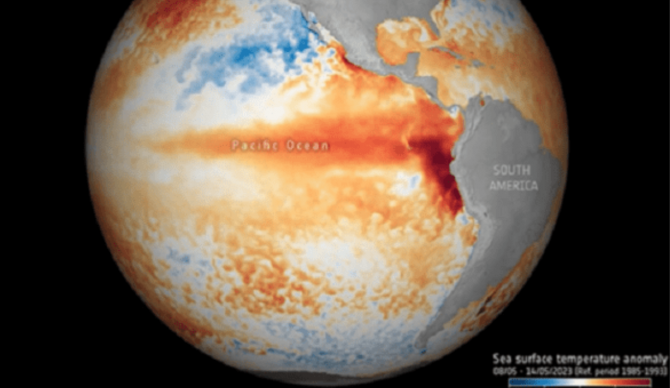The El Niño-to-La Niña watch continues for forecasters at the National Oceanic and Atmospheric Administration. The administration has been monitoring the gradual decline of this recent strong El Niño, which officially ended in May, and had shifted attention to the potential for an incoming La Niña. The latter, of course, is often associated with an increase in activity throughout the Atlantic Ocean and supercharging the Atlantic Hurricane Season.
“Zooming in a little, we’d be more likely to see activity begin earlier in the season than normal and then during the heart of the season, we’d be more likely to see stronger storms and potentially more instances of rapid intensification.,” Miami University’s Brian McNoldy told the media back in March.
The latest update from NOAA forecasters now says we have an 85 percent chance that La Niña is here by the Northern Hemisphere winter months. The probability drops down to 65 percent for a La Niña arrival by July-September. However you slice it, odds are increasing of experiencing some form of La Niña by the end of the year. Its intensity is still up in the air, as far as predictions are concerned.
“As far as model forecasts go, it’s too soon to put much stock in the forecasts: we’re just barely out of the notorious spring predictability barrier. The spread of possible outcomes is still pretty wide,” says NOAA. To add to that, there have only been 10 times on record where El Niño flipped to La Niña within the same year. It’s not a major sample size for forecasters to predict anything with strong confidence, however, a strong El Niño has flipped to a strong La Niña about half of those times in a chart which showed the progression of each instance.
“The strength of a given El Niño or La Niña isn’t a good predictor of the strength of the temperature or precipitation impacts in a particular place,” forecasters explained. “Stronger events do make it more likely that places prone to be influenced by El Niño or La Niña will experience some level of their typical impacts, but they don’t necessarily lead to stronger impacts. In other words, even a moderate or weak La Niña can have a strong impact on a given place.”
For now, NOAA forecasters seem most focused on the high probability (85 percent) that we are going to see a La Niña winter.


